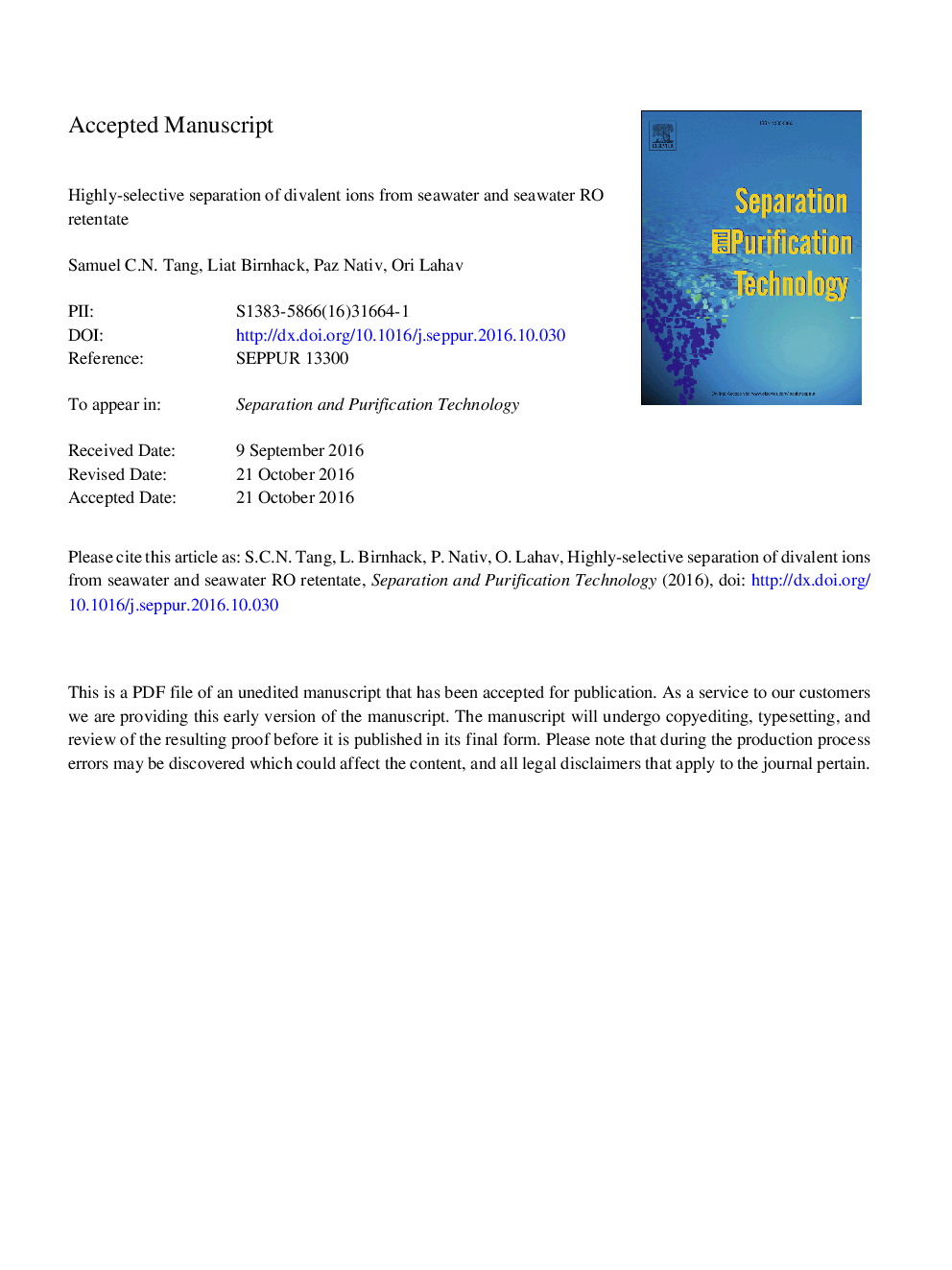| کد مقاله | کد نشریه | سال انتشار | مقاله انگلیسی | نسخه تمام متن |
|---|---|---|---|---|
| 4990007 | 1456945 | 2017 | 38 صفحه PDF | دانلود رایگان |
عنوان انگلیسی مقاله ISI
Highly-selective separation of divalent ions from seawater and seawater RO retentate
ترجمه فارسی عنوان
جداسازی بسیار جداسازی یون های دوالنت از آب دریا و آب دریا
دانلود مقاله + سفارش ترجمه
دانلود مقاله ISI انگلیسی
رایگان برای ایرانیان
موضوعات مرتبط
مهندسی و علوم پایه
مهندسی شیمی
تصفیه و جداسازی
چکیده انگلیسی
A membrane-based process is presented for separating divalent ions (namely Mg2+, Ca2+ and SO42â) from seawater in a highly selective fashion. The main goal is to selectively and cost-effectively separate Mg2+ from seawater with the intention of either dosing it into desalinated water in the desalination post-treatment stage or generating a Mg2+/Ca2+/SO42â solution that can be used for, e.g., precipitating struvite from high-strength wastewaters prior to anaerobic-digestion, with minimal addition of detrimental Clâ/Na+ ions. The process comprises three steps: First, seawater undergoes a high-recovery nanofiltration (NF) step with an “open” NF membrane aimed at reducing the molar ratio between divalent-cations and SO42â in the NF retentate. The retentate of this step is then subjected to further â¼65% recovery (conventional) NF step aimed at increasing the Mg2+ concentration in the retentate, which is thereafter subjected to a diananofiltration step aimed at reducing the monovalent ion concentrations while maintaining high Mg2+/SO42â concentrations in the product solution. The hypothesis (which was fully substantiated in the work) was that the reduction of the molar ratio between total hardness and SO42â in the retentate of the 1st NF step would result in a lower Clâ to Mg2+ concentration ratio in the product solution (retentate) of the NF-NF-DiaNF process sequence. Results are presented for a variety of operational conditions using both seawater and seawater reverse osmosis brine as raw solutions. The cost of separating one kg of Mg2+ from seawater using the method is significantly lower than the equivalent cost of the chemical MgSO4 in all the presented scenarios. However, reducing the Clâ concentration in the product solution by â¼62% more than doubled the cost. For example, dosage of 20 mg Mg2+/l to desalinated water was estimated at $0.006/m3 and $0.017/m3 for addition of 32 and 12 mg Clâ/l along with the Mg2+, respectively.
ناشر
Database: Elsevier - ScienceDirect (ساینس دایرکت)
Journal: Separation and Purification Technology - Volume 175, 24 March 2017, Pages 460-468
Journal: Separation and Purification Technology - Volume 175, 24 March 2017, Pages 460-468
نویسندگان
Samuel C.N. Tang, Liat Birnhack, Paz Nativ, Ori Lahav,
